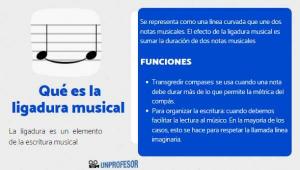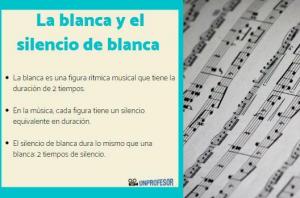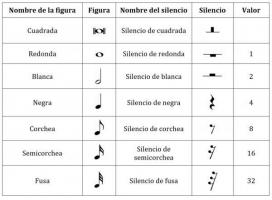What is musical ligature
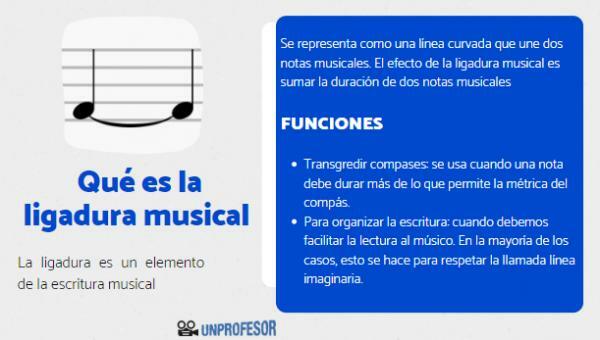
Music reading is a tool that allows us not only to continue learning but to discover new worlds and adventures, exercise our mind and explore new topics. Just like in literature and books, music also has its own writing and reading language that allows you to perform wonderful works, or train your mind to create music. If this is one of your goals, you should propose to learn more about musical writing, its figures and elements.
In this lesson from a TEACHER we will learn about what is musical ligature, an element in musical writing to alter the duration of notes.
Index
- Musical ligature: easy definition
- Main functions of the musical ligature
- The musical dot
- Rhythmic figures
Musical ligature: easy definition.
The ligature is an element of musical writing represented as a curved line that joins two musical notes. Just as it does in writing, the effect of the musical tie is to add the duration of two musical notes.
Remember that in music there are both notes and
silences, the ligation applies only to notes, since they are sounds that we must keep when flirting. Regardless of the duration of the musical figure, it is possible to link two notes. The ligature is used or not depending on the case and as long as it facilitates the reading.Main functions of the musical ligature.
Ligation has two main functions: transgress bars and organize writing.
- For transgress bars we mean when a note should last longer than the measure of the compass allows. For example, if we are in a 4/4 time signature, this means that the maximum number of beats allowed is 4 (one round). If we want a sound to last more than 4 beats in a 4/4 measure, we can resort to using a ligature so that the sound continues without interruption even when we have changed the measure.
- Now for organize writing ligature is very useful when we need to make it easier for the musician to read. In most cases, this is done to respect the call imaginary line. The imaginary line is a line that is not written on the staff but that we tend to have mentally when we subdivide a measure to understand the reading. Intricate rhythms or dotted figures can sometimes be difficult to read, so we turned to separate the musical figure but add a ligature to be able to maintain the same duration and respect the line imaginary.
Since we have mentioned it and so that you do not confuse it with ligature, we will explain a little about the musical dot.
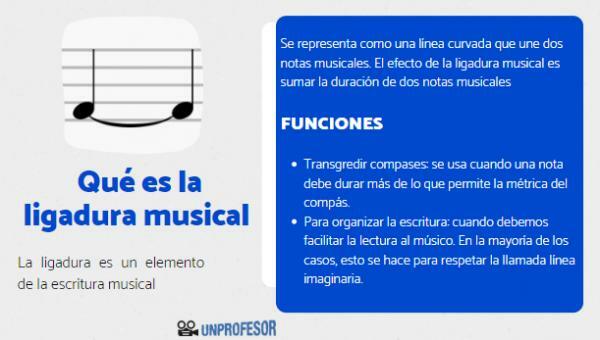
The musical dot.
The punctiliois another element of musical writing that is written precisely as a small dot on the right side of a musical figure. The effect of the dot on a figure is add half of the duration of the original figure.
Thus, for example, if we have a white as a figure with a dot, this means that instead of lasting 2 beats, it will last 3. Since white lasts two times, with the dot we add its half (1 time), 2 + 1 = 3 times. Unlike the tie, the dot can be used for both notes and rests.
To help you further explore the possibilities of ligature, we have included other sections on essential topics related to musical ligature in this article.
The rhythmic figures.
The rhythmic figures are all those symbols or pictures that are used in music for reading. As their name implies, they are the basis of rhythm, the element in music that plays with time and not with the pitch (since this function corresponds to the notes on the staff with pitch defined). There are figures for both notes and rests.
Musical figures have different symbols because in such a way we recognize how long it should last in the measure. The duration of a note or rest is measured in “time”.
Duration of musical figures
Notes duration
- Round = 4 times
- White = 2 times
- Black = 1 time
- Eighth note = 1/2 beat
- Half-Eighth note = 1/4 beat
Duration of silences
- Round silence = 4 times
- Silence of white = 2 times
- Quarter silence = 1 beat
- Eighth note rest = 1/2 beat
- Half-eighth note silence = 1/4 beat
Remember, these are just the basic rhythmic figures. There are more figures such as the fuse, the triplet and the sixtillo, just to give a couple more examples.
Since you have acquired the knowledge of what is the musical ligature among others, you can continue exploring the vast world of musical writing. Do not worry if at first it seems difficult because with time and practice it will become easier each time, to the point of not having to think about it and only enjoy the music.
If you want to read more articles similar to What is the musical ligature, we recommend that you enter our category of Musical language.

